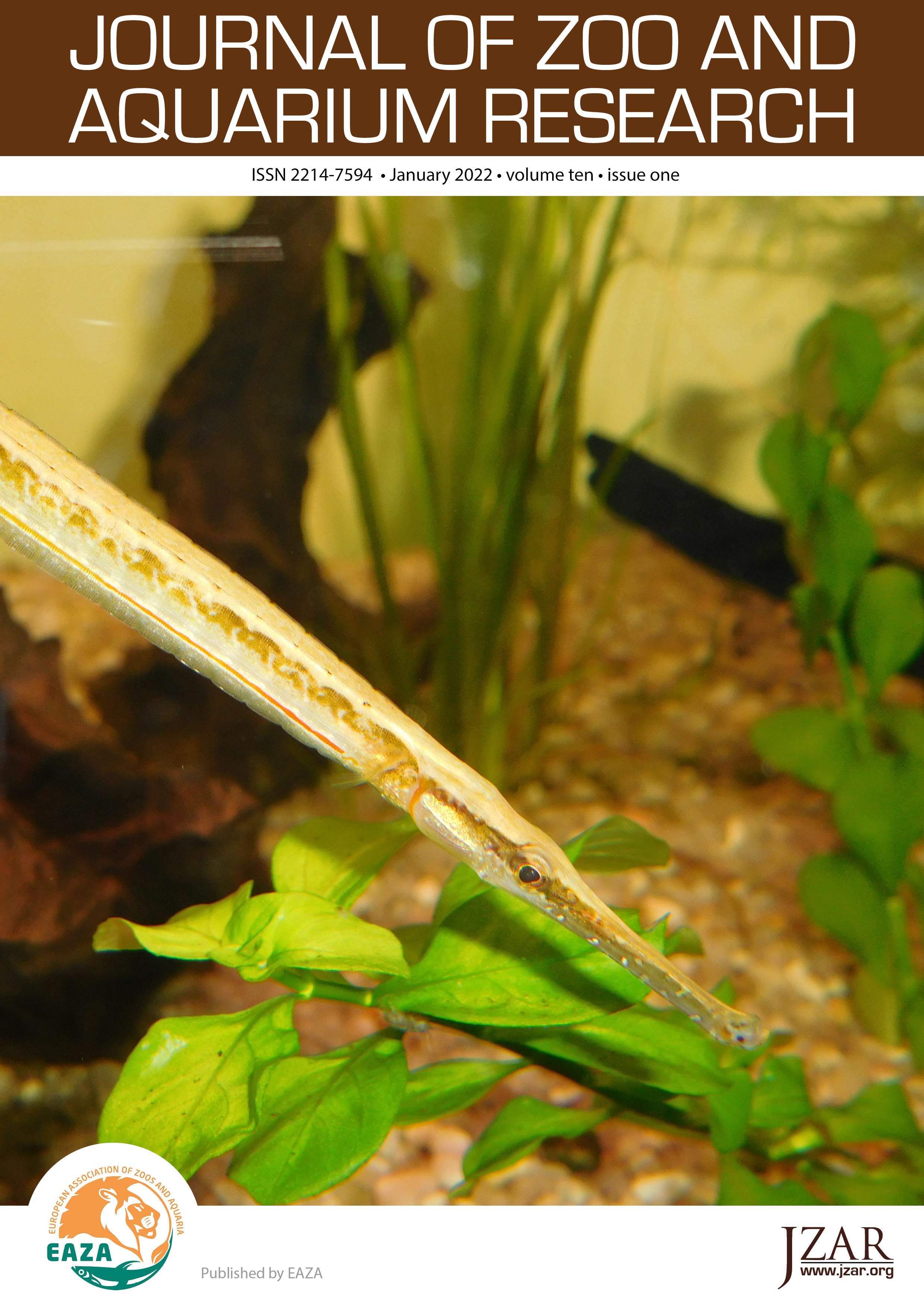Courtship behaviour of the freshwater pipefish Microphis aculeatus (Syngnathidae): A case study in captive breeding
DOI:
https://doi.org/10.19227/jzar.v10i1.545Keywords:
courtship, freshwater, Microphis aculeatus, pipefish, reproduction, SyngnathidaeAbstract
An account of the first documented spawning of the pipefish Microphis aculeatus (Syngnathidae) is presented. Pipefishes and seahorses are sex-reversed and males brood ova, displaying a level of parental investment extraordinary among teleost fishes. Pipefishes are known to exhibit complex courtship rituals, described here for M. aculeatus from a series of spawning events in a captive population at a public aquarium. Reproductive individuals ranged from 125–145 mm (male) and 136–144 mm (female) in total length giving a first estimate of size at maturity for the species. Spawning events (n=19) occurred in November over a period of 10 days immediately following illumination of the exhibit, suggesting that lighting is a primary cue in reproductive behaviour for this species. The courtship behaviour is initiated by males and can be divided into five distinct phases (described herein) which are characterised by displays of body quivering, rostral pointing, caudal fin fanning and curvature of the body into a distinctive “S” shaped curve while displaying the ventral side (harbouring the brood pouch) towards the female. Respiration rates were markedly increased during copulatory behaviour, peaking at 128 min-1 (male) and 120 min-1 (female). The observations of breeding and ventilation rates have implications for the nutritional status, age class and general husbandry practices required for spawning these pipefishes in an aquarium.
Downloads
Published
How to Cite
Issue
Section
License
JZAR fulfils the DOAJ definition of open access and provides free and open access to the full text of all content without delay under a Creative Commons licence. The copyright holder of JZAR publications grants usage rights to third parties, allowing for immediate free access to the work and permitting any user to read, download, copy, distribute, print, search, or link to the full texts of articles.







